A Real-Time and Open Geographic Information System and Its Application for Smart Rivers: A Case Study of the Yangtze River
Abstract
:1. Introduction
2. Methods
2.1. System Architecture
2.2. System Method
2.2.1. The Conceptual Mapping of the Real-Time GIS Data Model to Open GIS Models, Services, and the Real-Time Computation Framework
- Sensor mapping to the SensorML and the SOS: The SensorML described Sensor information, and the SOS serviced the observation result of a sensor.
- Spatiotemporal process mapping to the WPS and Spark: A spatiotemporal process is encapsulated as a service by the WPS with the Spark computing framework.
- Observation mapping to the O&M model and the SOS: An observation is encoded by O&M, and the observation is provided by the SOS.
- Simulation mapping to the WPS and Spark: The simulation is the result of a spatiotemporal process. The simulation can be encoded by the O&M model and serviced by the SOS.
- GeoObject mapping to the Geography Markup Language (GML): A GeoObject is encoded by using the GML, and then it becomes the Object.
- Change function mapping to the WPS and Spark: A change function is a process, and it can be encapsulated as a service by the WPS with the Spark computing framework.
2.2.2. The Integration of Open GIS Services, Real-Time Computation Framework, and Hybrid Databases
2.3. System Implementation
- Integrates with professional observation systems and integrates heterogeneous sensors from many industries, observation platforms, and protocols.
- Shares the whole process of observation and implements the real-time sharing of the observation environment, observation platform, observation data, and observation products in the web environment.
- Integrates domain applications with geography information systems through data, models, events, and services.
- Has the functions of assistant decision-making and simulation and implements the simulation of complex processes by combining professional assistant decision-making models.
3. Case Study
4. Results and Discussions
4.1. Applications for Hydropower Production
4.2. Application for Flood Control
4.3. Application for Navigation
4.4. A Way to Have a Real-Time and Open GIS
5. Conclusions and Outlooks
Author Contributions
Funding
Conflicts of Interest
References
- Goodchild, M.F. Citizens as sensors: The world of volunteered geography. GeoJournal 2007, 69, 211–221. [Google Scholar] [CrossRef]
- Zhang, X.; Chen, N.; Chen, Z.; Wu, L.; Li, X.; Zhang, L.; Di, L.; Gong, J.; Li, D. Geospatial sensor web: A cyber-physical infrastructure for geoscience research and application. Earth Sci. Rev. 2018, 185, 684–703. [Google Scholar] [CrossRef]
- Xu, W.; Zhu, Q.; Zhang, Y.; Ding, Y.; Hu, M. Real-time GIS and its application in indoor fire disaster. In Proceedings of the ISPRS 8th 3D Geoinfo Conference & Wg II/2 Workshop, Istanbul, Turkey, 27–29 November 2013; Isikdag, U., Ed.; Copernicus Gesellschaft MBH: Gottingen, Germany, 2013. [Google Scholar]
- Li, X. Real-Time GIS Data Model supporting dynamic data management and spatiaotemporal process simulation. Ph.D. Thesis, Wuhan University, Wuhan, China, 30 June 2014. [Google Scholar]
- Gong, J.; Geng, J.; Chen, Z. Real-time GIS data model and sensor web service platform for environmental data management. Int. J. Health Geogr. 2015, 14. [Google Scholar] [CrossRef] [PubMed]
- Looking Forward: Five Thoughts on the Future of GIS. Available online: http://www.esri.com/news/arcwatch/0211/future-of-gis.html (accessed on 18 January 2019).
- Koonar, A.; Ou, Z.; Scarlett, B. A real-time geo-spatial information system: An integration of GIS technologies for ice forecasting. In Proceedings of the ISPRS Workshop on Spatial Analysis and Decision Making, Hong Kong, China, 3–5 December 2003; Li, Z., Zhou, Q., Kainz, W., Eds.; A.A. Balkema Publishers: Rotterdam, The Netherlands, 2003. [Google Scholar]
- Tanzi, T.; Servigne, S. A real-time GIS for accident prevention on toll motorways. In 3rd Joint European Conference and Exhibition on Geographical Information—From Research to Application through Cooperation, Vienna, Austria, 16–18 April 1997; Hodgson, S., Rumor, M., Harts, J., Eds.; IOS Press: Amsterdam, The Netherlands, 1997. [Google Scholar]
- Real-time Geographical Information Systems for ITS. Available online: https://pdfs.semanticscholar.org/23f4/b895fe6ac870b73769754e7fa2daf907f249.pdf (accessed on 18 January 2019).
- Li, M.; Liu, H.; Yang, C. A real-time GIS platform for high sour gas leakage simulation, evaluation and visualization. In Proceedings of the ISPRS International Workshop on Spatiotemporal Computing, Fairfax, VA, USA, 13–15 July 2015; Yang, C., Clarke, K., Yuan, M., Yu, M., Li, M., Guan, W., Sun, M., Huang, B., Eds.; Copernicus Gesellschaft MBH: Gottingen, Germany, 2015. [Google Scholar]
- A Web-Based Application for Real-Time GIS. Available online: http://www.isprs.org/proceedings/xxxv/congress/yf/papers/934.pdf (accessed on 18 January 2019).
- Arai, C.; Matsuda, N.; Shikada, M. An application of remote sensing and real time GIS to digital map for local government. In 23rd International Geoscience and Remote Sensing Symposium (IGARSS 2003), Toulouse, France, 21–25 July 2003; Caldararu, F., Patrascu, S., Caldararu, M., Paraschiv, A., Eds.; IEEE: New York, NY, USA, 2003. [Google Scholar]
- Dabrowski, J.; Kulawiak, M.; Moszynski, K.; Bruniecki, L.; Kaminski, A.; Chybicki, A.; Stepnowski, A. Real-Time Web-based GIS for Analysis, Visualization, and Integration of Marine Environment Data. In Proceedings of the Information Fusion and Geographic Information Systems, Berlin, German, 17–20 May 2009; Popovich, V.V., Claramunt, C., Schrenk, M., Korolenko, K.V., Eds.; Springer: Berlin/Heidelberg, Germany, 2009. [Google Scholar]
- Beaubouef, T.; Breckenridge, J. Real-world issues and applications for real-time geographic information systems (RT-GIS). J. Navig. 2000, 53, 124–131. [Google Scholar] [CrossRef]
- Laurini, R.; Servigne, S.; Noel, G. Soft Real-Time GIS for Disaster Monitoring. In Geo-Information for Disaster Management; van Oosterom, P., Zlatanova, S., Fendel, E., Eds.; Springer: Berlin/Heidelberg, Germany, 2005. [Google Scholar]
- Yun, J.; Kim, D.; Hong, D.; Kim, M.; Han, K. A real-time mobile GIS based on the HBR-tree for location based services. Comput. Ind. Eng. 2006, 51, 58–71. [Google Scholar] [CrossRef]
- OGC® Standards. Available online: http://www.opengeospatial.org/standards (accessed on 18 January 2019).
- Bröring, A.; Echterhoff, J.; Jirka, S.; Simonis, I.; Everding, T.; Stasch, C.; Liang, S.; Lemmens, R. New generation sensor web enablement. Sensors 2011, 11, 2652–2699. [Google Scholar]
- OGC Sensor Observation Service Interface Standard. Available online: https://portal.opengeospatial.org/files/?artifact_id=47599 (accessed on 18 January 2019).
- Infrastructure for Spatial Information in Europe (INSPIRE) Program. Available online: https://inspire.ec.europa.eu/ (accessed on 18 January 2019).
- Christian, E. Planning for the Global Earth Observation System of Systems (GEOSS). Space Policy 2005, 21, 105–109. [Google Scholar] [CrossRef]
- The 52° North Software. Available online: https://52north.org/software/software-projects/ (accessed on 18 January 2019).
- Top Big Data Processing Frameworks. Available online: http://www.kdnuggets.com/2016/03/top-big-data-processing-frameworks.html (accessed on 18 January 2019).
- Hadoop Website. Available online: http://hadoop.apache.org/ (accessed on 18 January 2019).
- Storm Website. Available online: http://storm.apache.org/ (accessed on 18 January 2019).
- Zaharia, M.; Chowdhury, M.; Franklin, M.J.; Shenker, S.; Stoica, I. Spark: Cluster computing with working sets. HotCloud 2010, 10, 95. [Google Scholar]
- Zhou, L.; Chen, N.; Chen, Z. Efficient Streaming mass spatial-temporal vehicle Data Access in urban sensor networks based on Apache Storm. Sensors 2017, 17, 815. [Google Scholar] [CrossRef] [PubMed]
- Chen, N.; Chen, Z.; Hu, C.; Di, L. A capability matching and ontology reasoning method for high precision Open GIS Service discovery. Int. J. Digit. Earth 2011, 4, 449–470. [Google Scholar] [CrossRef]
- Chen, Z.; Chen, N.; Di, L.; Gong, J. A Flexible Data and Sensor Planning Service for Virtual Sensors Based on Web Service. IEEE Sens. J. 2011, 11, 1429–1439. [Google Scholar] [CrossRef]
- Chen, N.; Di, L.; Yu, G.; Min, M. A Flexible Geospatial Sensor Observation Service for Diverse Sensor Data Based on Web Service. Isprs J. Photogramm. Remote Sens. 2009, 264, 234–242. [Google Scholar] [CrossRef]
- Liu, H.; Chen, N.; Chen, Z. Retrieving Method for MODIS Sea Surface Temperature with Apache Spark. Comput. Syst. Appl. 2018, 27, 112–117. [Google Scholar]
- MongoDB Website. Available online: https://www.mongodb.com/ (accessed on 18 January 2019).
- PostgreSQL Website. Available online: https://www.postgresql.org/ (accessed on 18 January 2019).
- Java Website. Available online: https://www.oracle.com/technetwork/java/index.html (accessed on 18 January 2019).
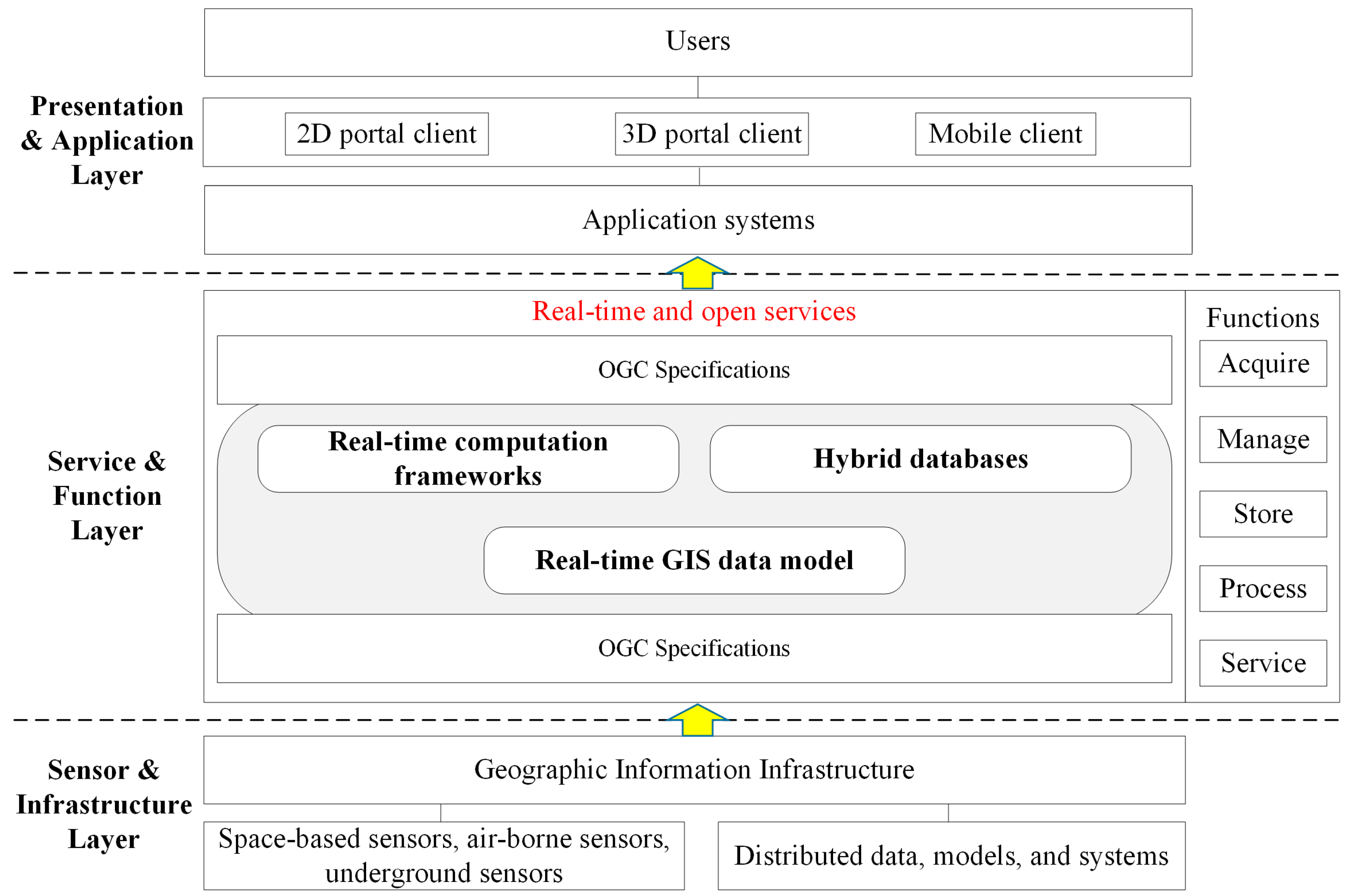
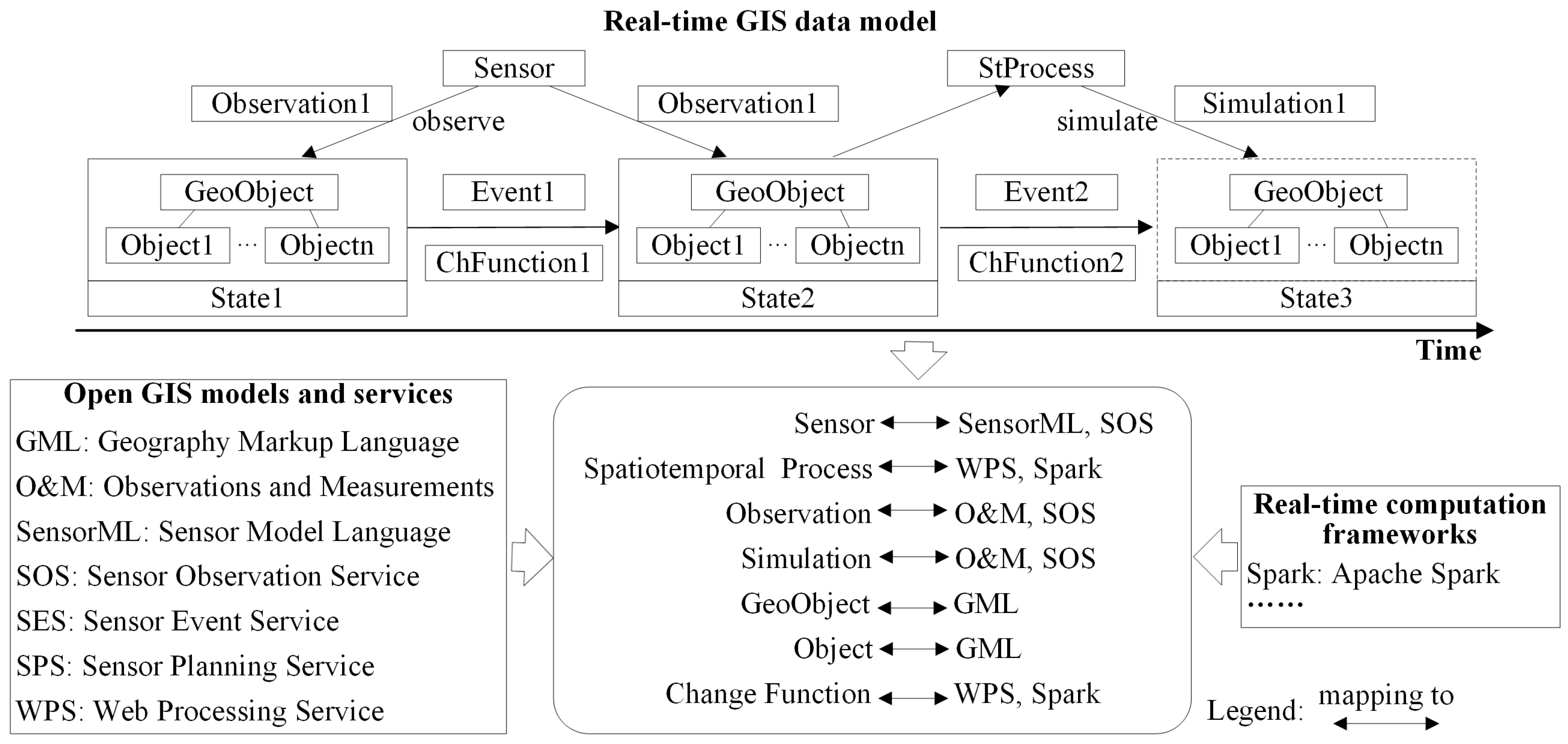
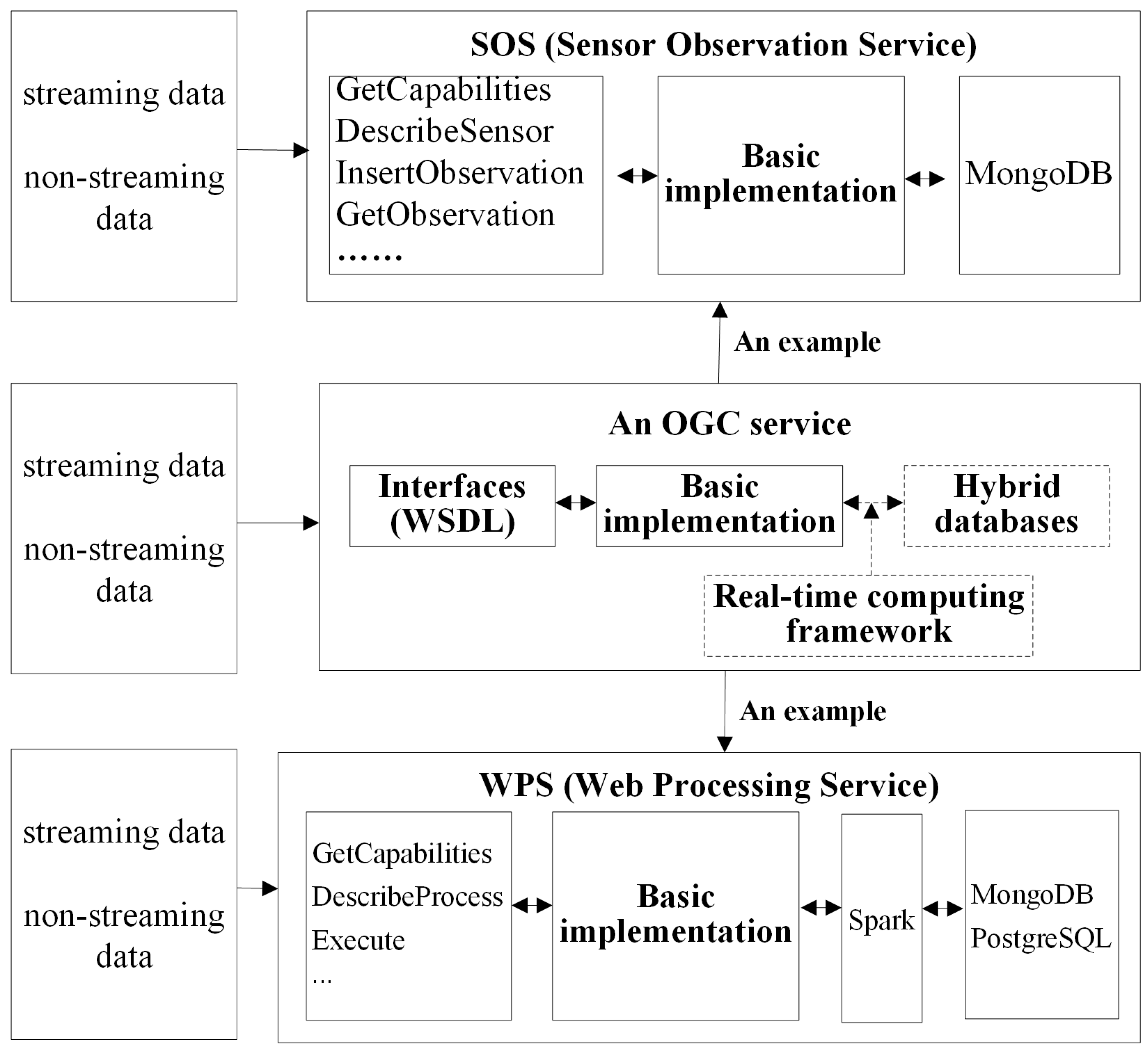
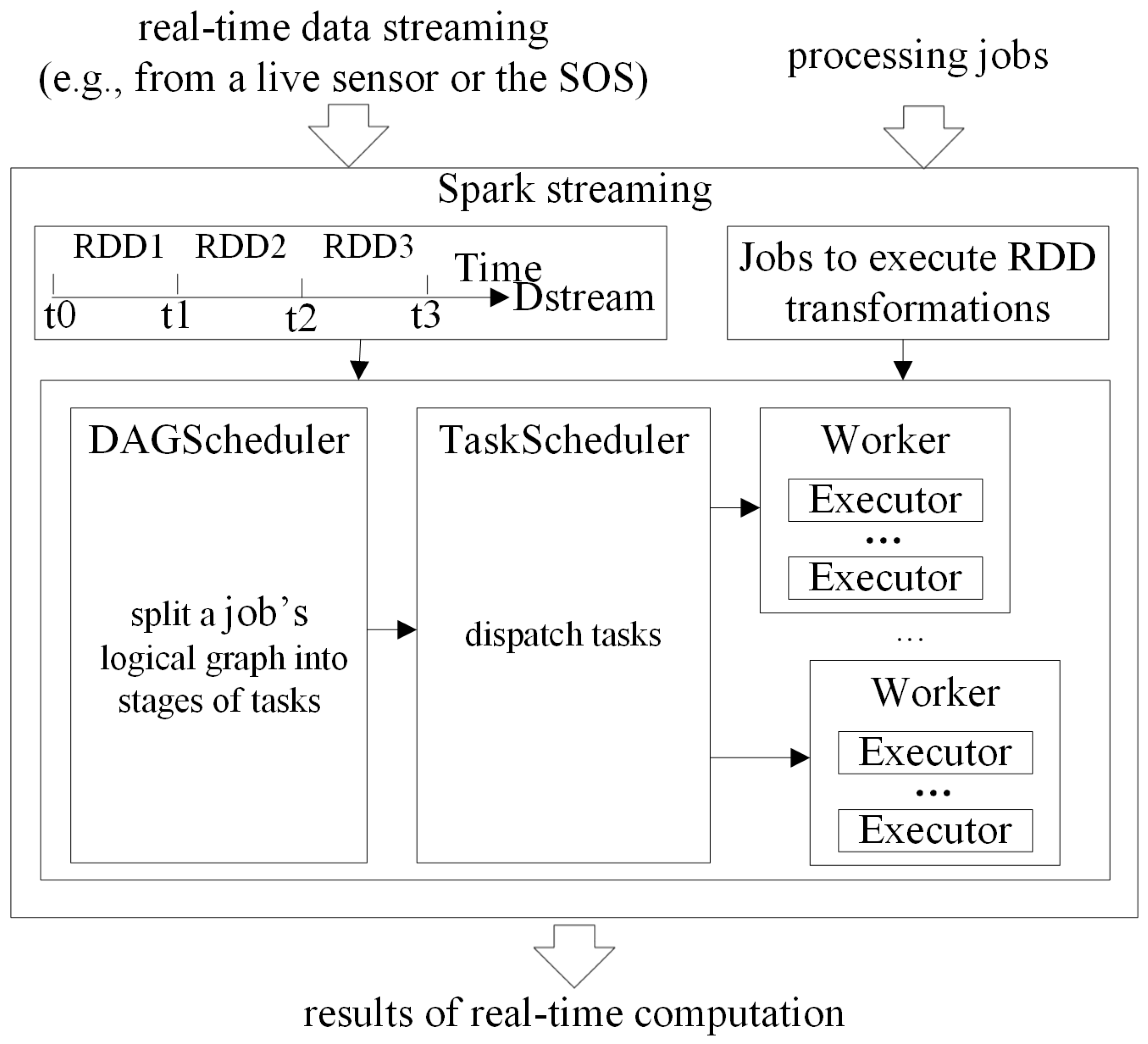
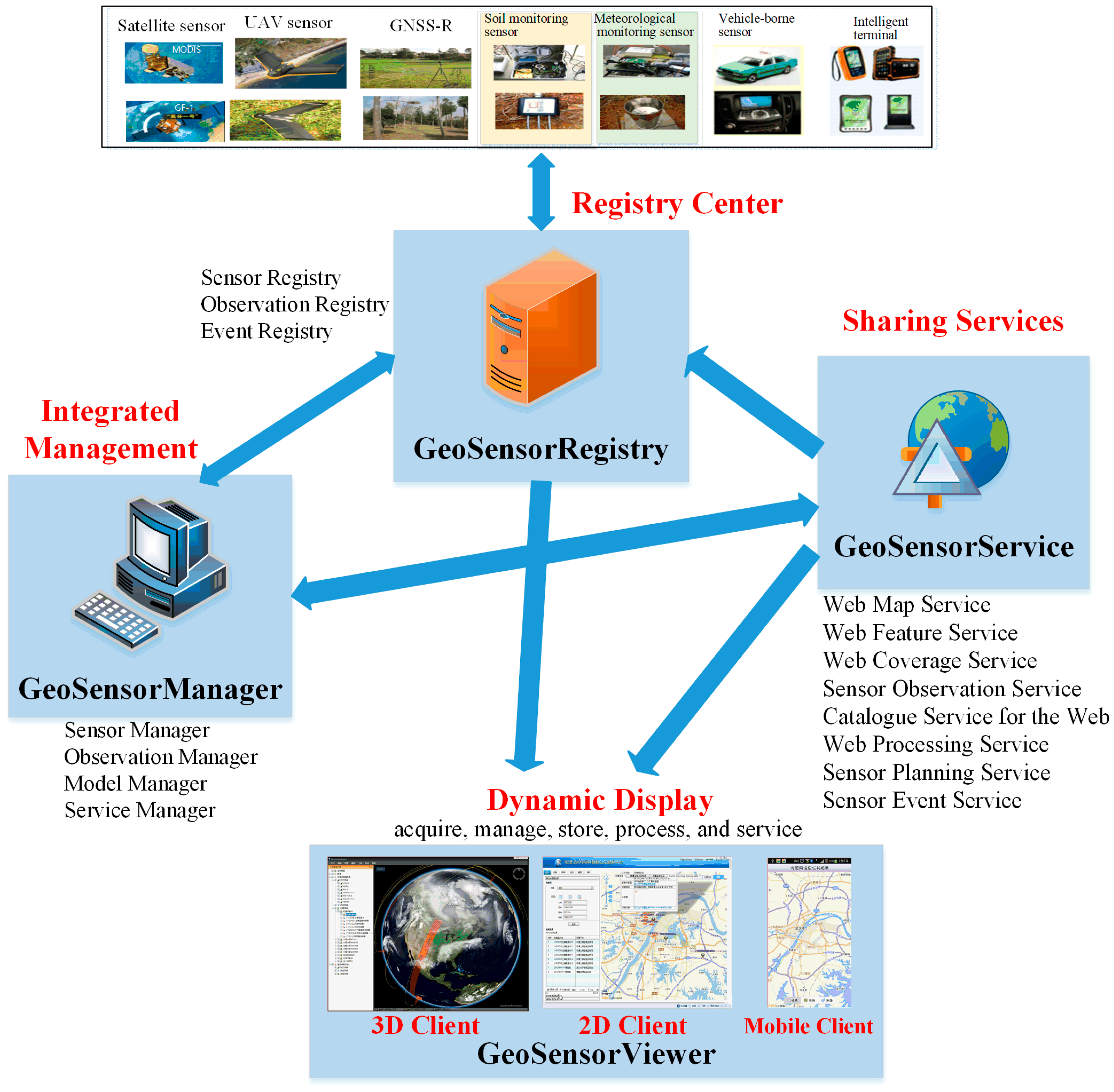

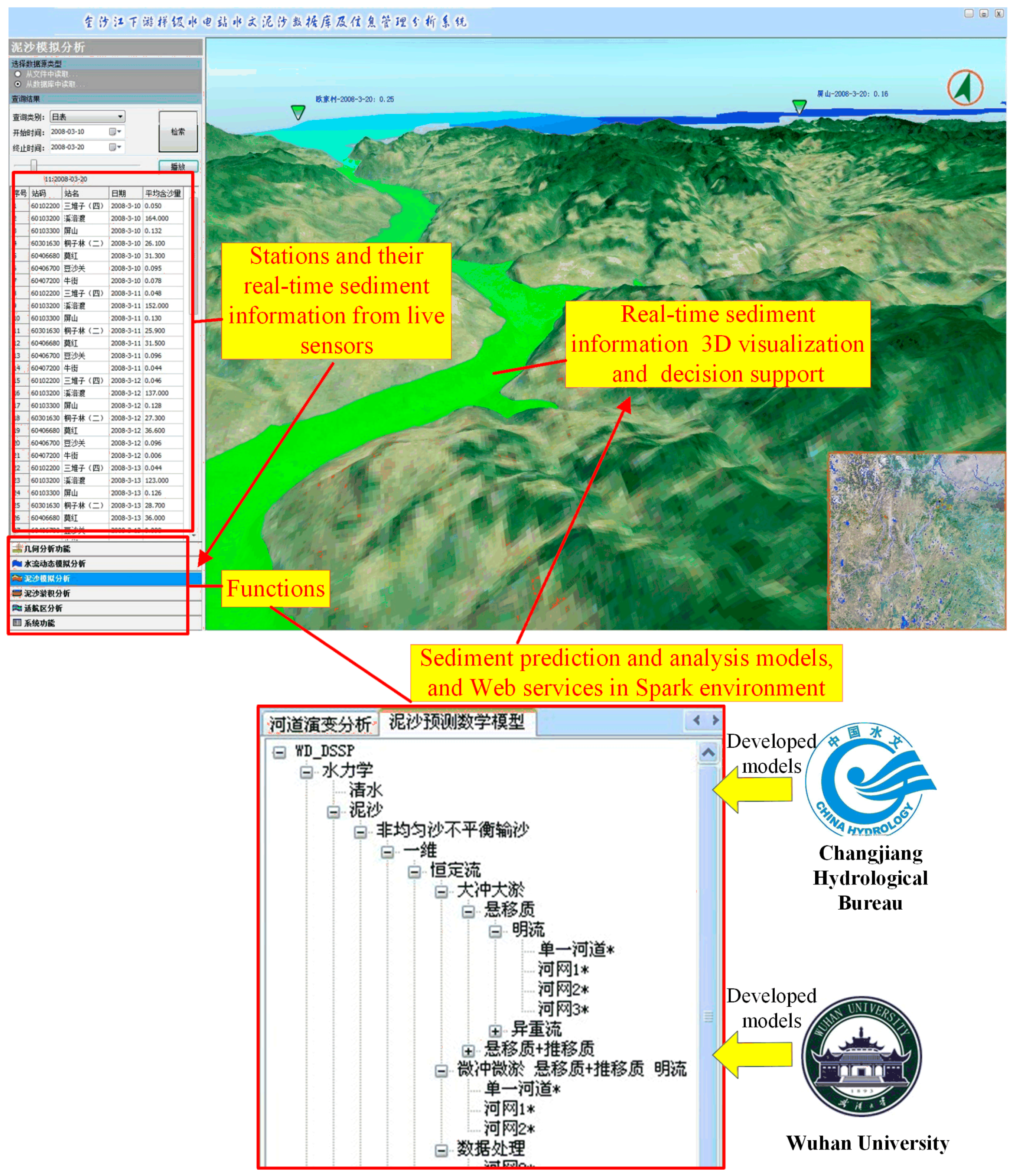
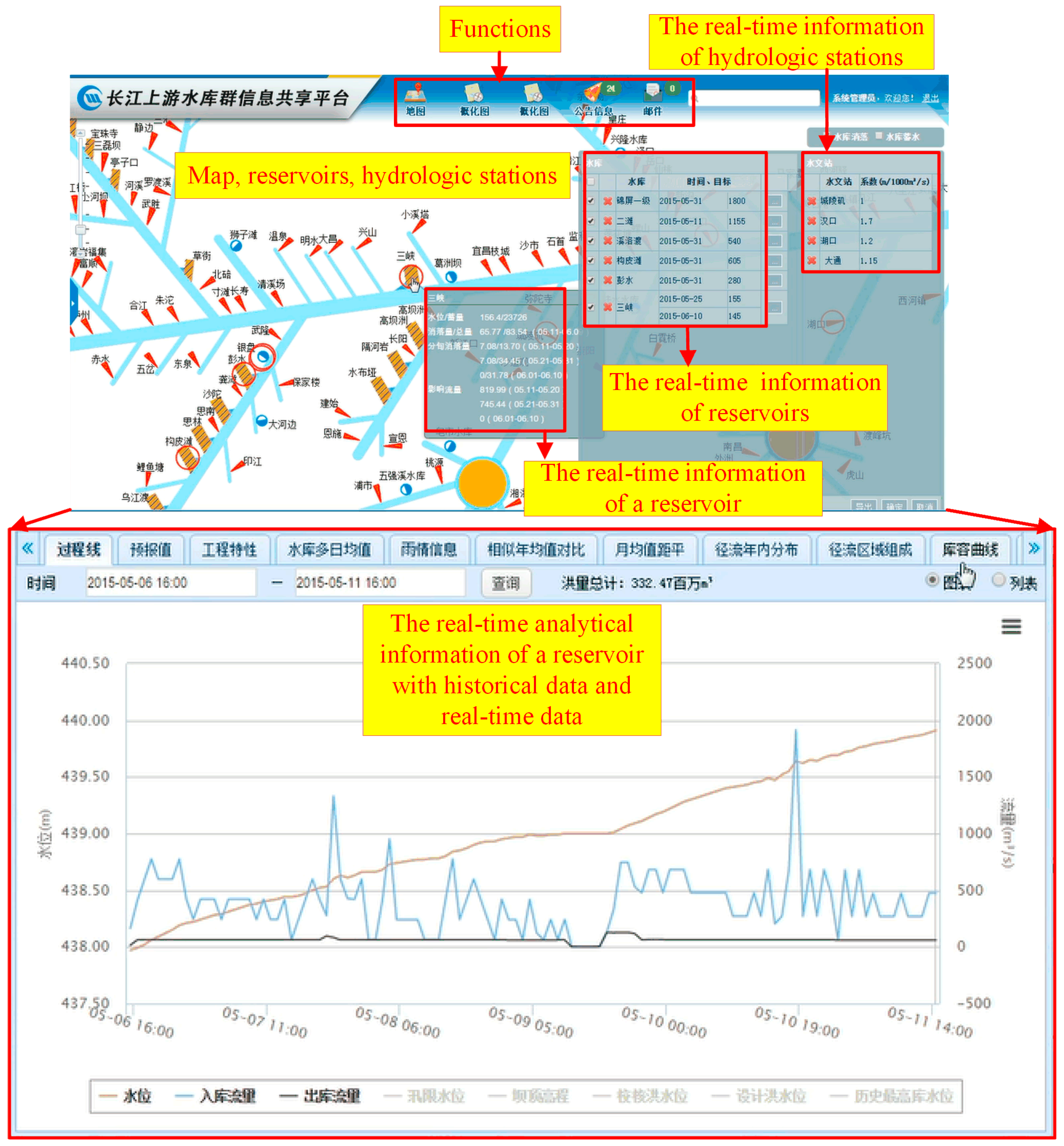
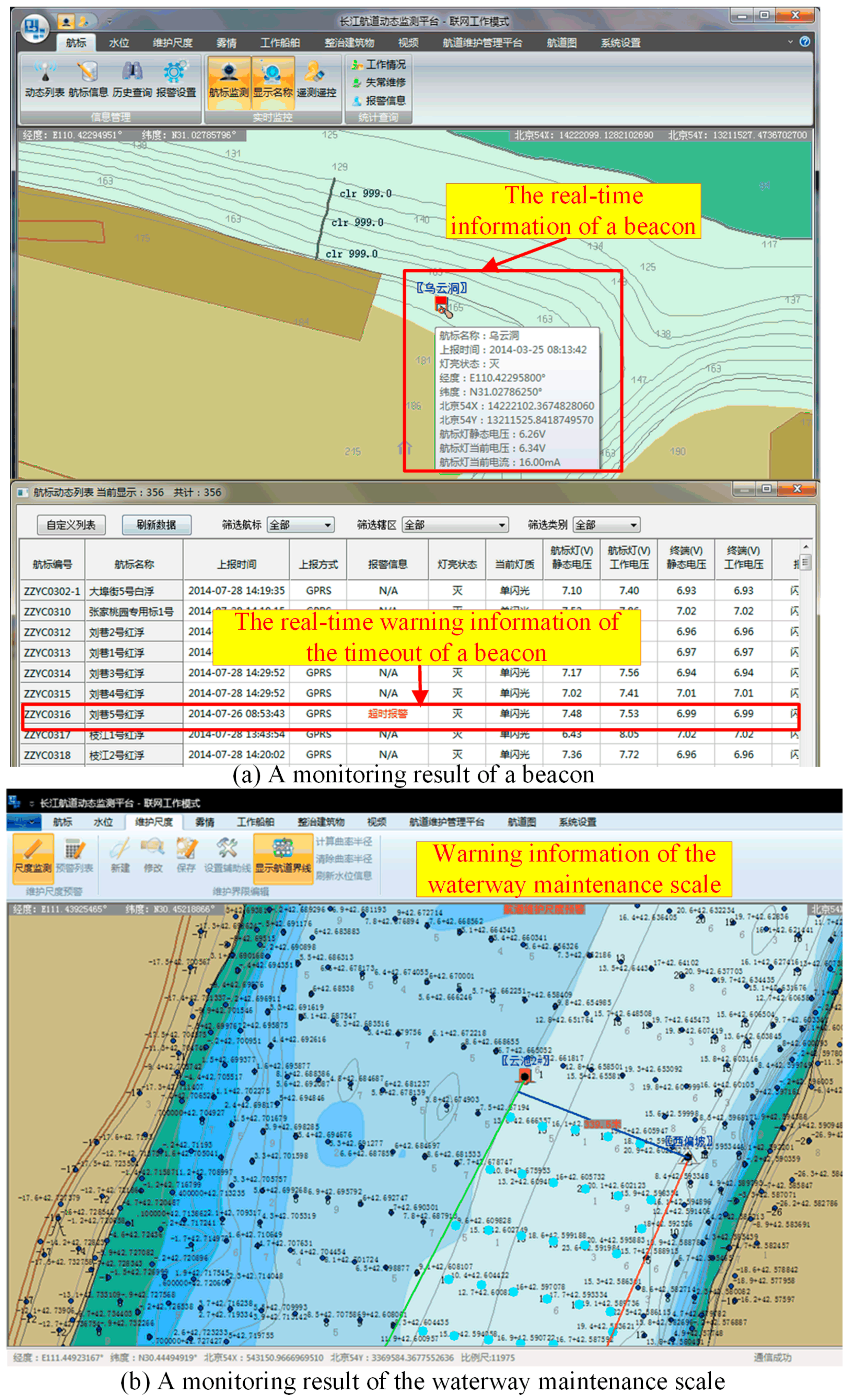
| Name | Version |
|---|---|
| CentOS (Linux system) | 6.2 (64-bit) |
| Java JDK | 1.7 |
| Apache JMeter | 2.13 |
| MongoDB | 3.0 |
| PostgreSQL | 9.2 |
| Tomcat | 7.0.61 |
| Name | Parameters |
|---|---|
| CPU | Intel Xeon E5-2620 (2*6 core, 2.00 GHz) |
| Memory | 32 GB (1333 MHz) |
| Hard drive | 405 GB (SAS, 15000 rpm) |
| Network | 1 Gbps |
| PostgreSQL SOS | MongoDB SOS | ||
|---|---|---|---|
| Data Size (Tens of Thousands) | Response Time (Milliseconds) | Data Size (Tens of Thousands) | Response Time (Milliseconds) |
| 0 | 58 | 0 | 51 |
| 10 | 67 | 100 | 49 |
| 50 | 78 | 500 | 50 |
| 100 | 122 | 1000 | 51 |
| 300 | 280 | 3000 | 46 |
| 1000 | 411 | 10000 | 41 |
| / | / | 30000 | 42 |
| Concurrent Users | Response Time (Milliseconds) | ||
|---|---|---|---|
| PostgreSQL SOS | MongoDB SOS | MongoDB SOS/PostgreSQL SOS | |
| 1 | 37 | 13 | 35.14% |
| 10 | 72 | 11 | 15.28% |
| 100 | 1559 | 34 | 2.18% |
| 200 | 2687 | 74 | 2.75% |
| 1000 | 12564 | 437 | 3.48% |
© 2019 by the authors. Licensee MDPI, Basel, Switzerland. This article is an open access article distributed under the terms and conditions of the Creative Commons Attribution (CC BY) license (http://creativecommons.org/licenses/by/4.0/).
Share and Cite
Chen, Z.; Chen, N. A Real-Time and Open Geographic Information System and Its Application for Smart Rivers: A Case Study of the Yangtze River. ISPRS Int. J. Geo-Inf. 2019, 8, 114. https://doi.org/10.3390/ijgi8030114
Chen Z, Chen N. A Real-Time and Open Geographic Information System and Its Application for Smart Rivers: A Case Study of the Yangtze River. ISPRS International Journal of Geo-Information. 2019; 8(3):114. https://doi.org/10.3390/ijgi8030114
Chicago/Turabian StyleChen, Zeqiang, and Nengcheng Chen. 2019. "A Real-Time and Open Geographic Information System and Its Application for Smart Rivers: A Case Study of the Yangtze River" ISPRS International Journal of Geo-Information 8, no. 3: 114. https://doi.org/10.3390/ijgi8030114
APA StyleChen, Z., & Chen, N. (2019). A Real-Time and Open Geographic Information System and Its Application for Smart Rivers: A Case Study of the Yangtze River. ISPRS International Journal of Geo-Information, 8(3), 114. https://doi.org/10.3390/ijgi8030114





